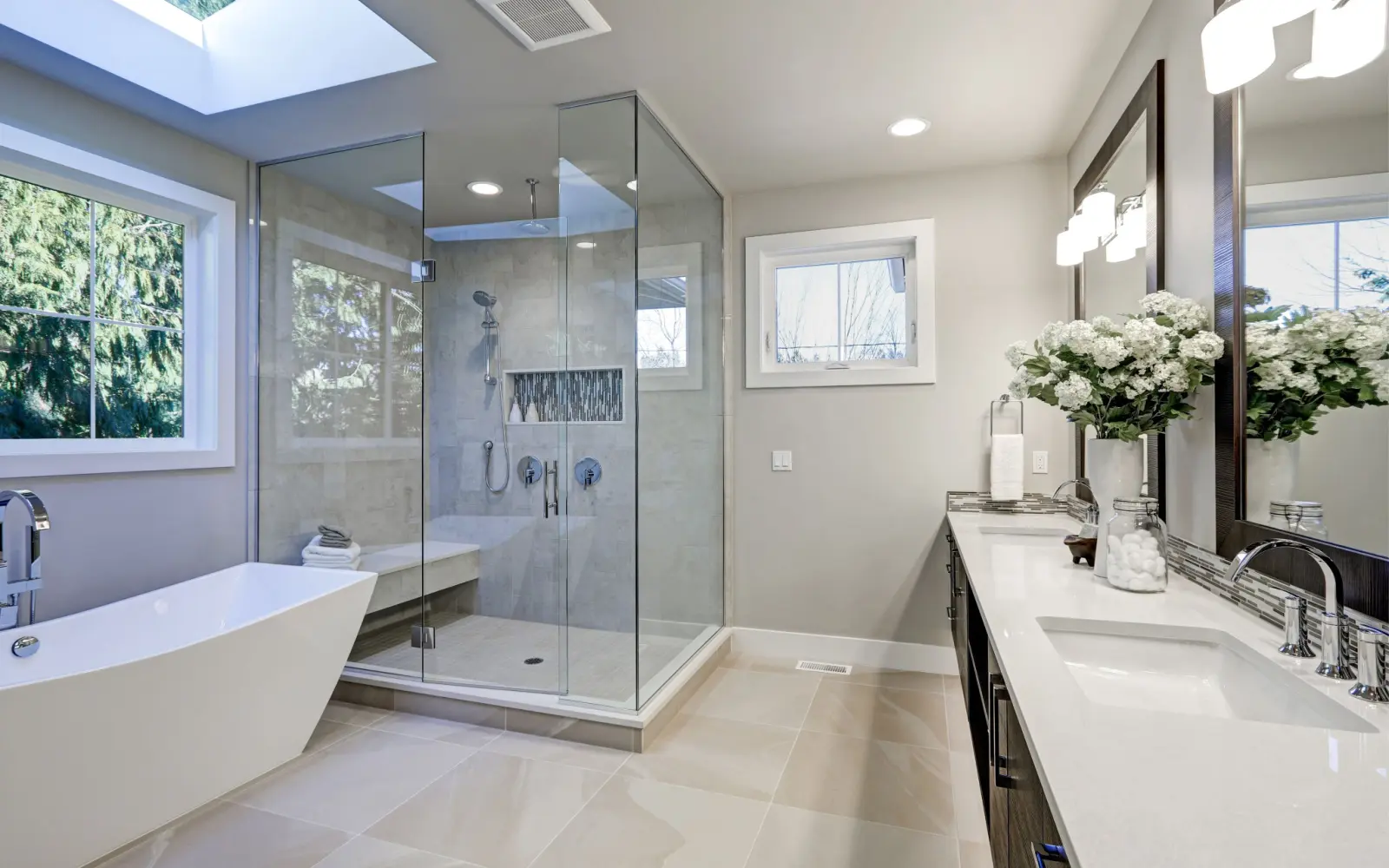Finding the right shower pan can be tricky if you’re new to bathroom renovations, especially replacing your old tub for a shower or upgrading your weathered shower floors.
The standard size for a shower pan can vary, but a common size for a standard shower pan is:
- Shower Pan Width: Typically between 32 inches and 48 inches (81 cm and 122 cm)
- Shower Pan Length: Typically between 32 inches and 60 inches (81 cm and 152 cm)
- Shower Pan Height: Usually around 3 to 4 inches (7.6 cm to 10.2 cm)
- Shower Pan Depth: The depth of the shower pan may vary, but it is generally designed to allow proper drainage.
What Is a Shower Pan?
A shower pan is a floor piece underneath your shower that collects water into the drain.
A good shower pan is stylish and durable enough to wear and tear from body weight, showering, and traffic.
And if you’ve ever noticed your shower water funneling into the drain, you’ll begin to see your shower pan slopping. Shower pans are one-piece kits that fit snugly into any shower alcove with shower walls surrounding it.
The shower pans prevent water from damaging your home by keeping the water inside the shower. For instance, leaking water could cause an electrical shortage or fire, or constant moisture can cause mold growth.
You should replace your shower pan if you begin to notice these signs of water damage:
- Water stains on the ceiling underneath the shower floor
- Visible water stains or peeling paint on baseboards
- Loose shower floor tiles
- Swelling or warped floors
What Are Common Shower Pan Sizes?
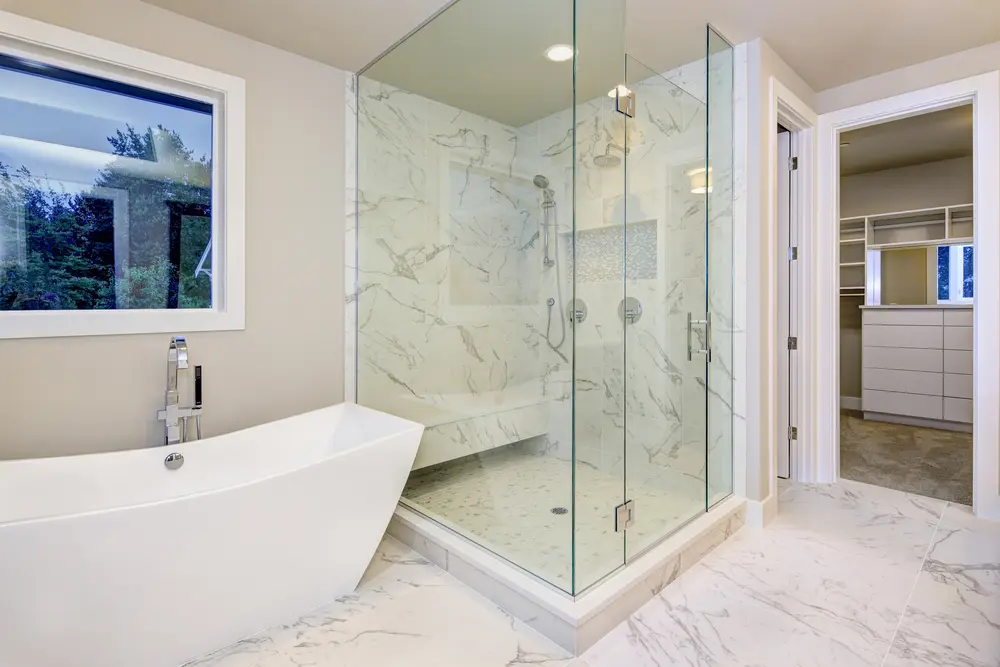
Artazum/Shutterstock
There are six common customizable shower pan sizes. These include:
- Standard
- Corner
- Rectangular
- Walk-in
- Small
- Bathtub
Standard Shower Pan Sizes
Standard shower pans, also known as rectangular shower base pans, fit into most showers and traditional home baths. The standard dimension is 30 x 30 inches.
Thinset mortar is recommended with shower pans to reduce the risk of pan damage on uneven surfaces.
Thinset mortar is a blend of latex and polymer that adheres to tile walls and shower bases.
Corner Shower Pan Sizes
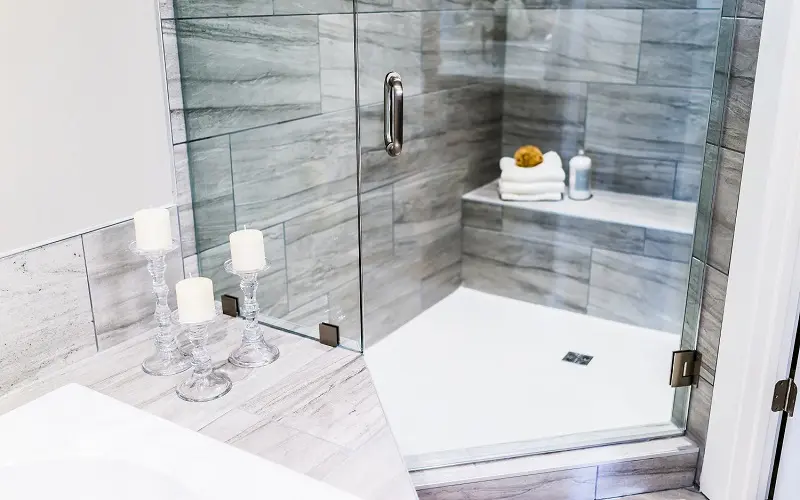
Kristi Blokhin/Shutterstock
Corner shower pans fit a two-wall corner with moving space for showering. As a result, you often find them in small showers for tiny homes, outdoors, and RVs.
You can find the right size by measuring the corner of your shower floor’s dimensions.
Corner shower pans range in size from 36 to 60 inches. And corner shower pans are easy to find prefabricated.
Rectangular Shower Pan Sizes
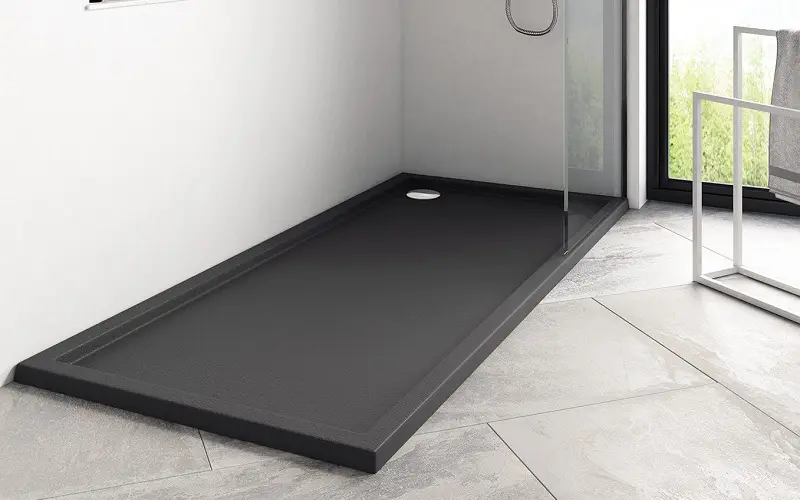
Image/Pinterest.com
Rectangular shower pans are known for their extended widths and short vertical depth, which provide ample moving space in the shower.
They are a good match for people with handicapped chairs and health conditions that limit their mobility in the shower.
Common sizes include:
- Small-sized showers have dimensions of 32 x 48 inches
- Medium-sized showers range from 36 x 54 inches to 36 x 60 inches
- Large rectangular shower pan dimensions vary between 42 x 60 inches and 48 x 60 inches
Rectangular shower pans that exceed 60 inches wide are ADA-compliant. ADA-compliant shower pans help family members and caregivers quickly assist their loved ones.
Walk-in Shower Pan Sizes
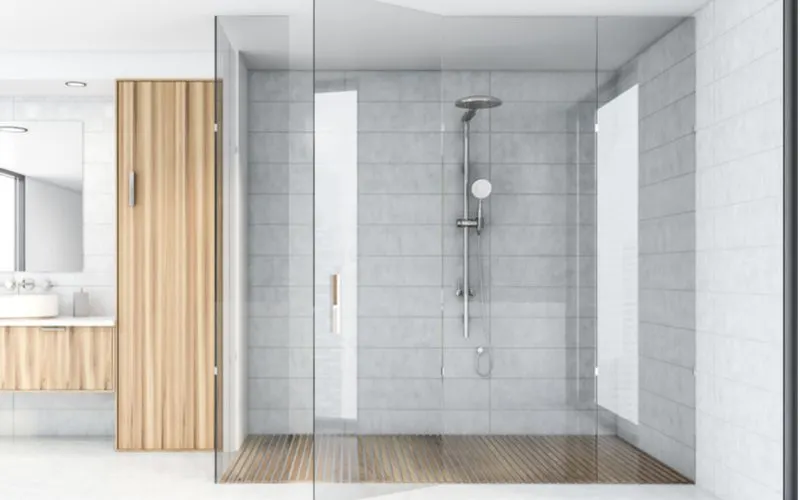
ImageFlow/Shutterstock
Walk-in shower plans can range from as small as 32 x 48 inches to as large as 48 x 60 inches. And they offer freedom by offering pre-manufactured shower pans or a custom base.
Walk-in shower pans are not limited to standard dimensions or tile type. Including base former shower pans that hide underneath your wood joists and tile floors.
Small Shower Pan Sizes
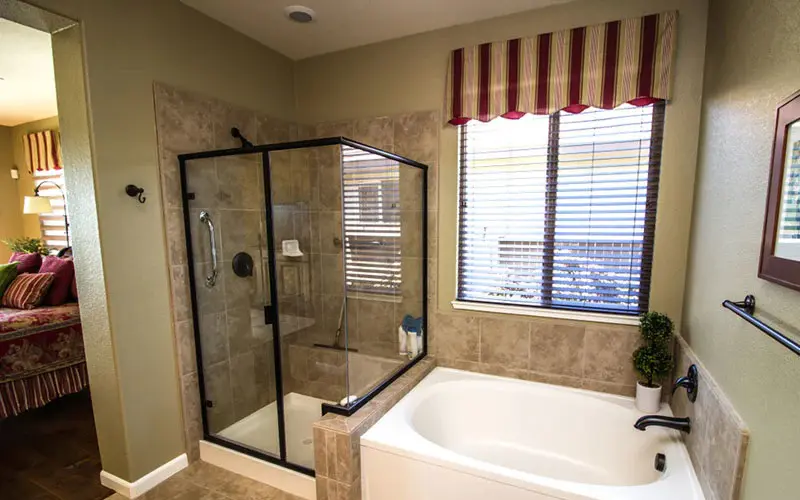
Thomas Photo/Shutterstock
Small shower pans are ordinary in tiny single-family homes, university dorms, and apartments. They have a dimension of 30 x 76 inches.
You can find affordable small shower pans made of acrylic and fiberglass materials. In addition, small luxury bathrooms should consider customizing tiled or solid shower bases such as cultured marble or copper.
Bathtub Size Shower Pan
If you’re renovating your bathtub into a walk-in shower, you can save money on your water bill by consuming less water in the shower and increasing the value of your home.
- Small bathtub replacements range from 30 x 60 inches
- Medium-sized bathtub replacements have dimensions of 36 x 60 inches
- Larger bathtub replacements are 48 ix 60 inches
Replacing your bathtub with a new shower base can be tricky.
For best results, you should customize medium to large-sized bathtub replacements with the original print of your bathtub. Prefabricated is best for small bathtub replacements.
Types of Shower Pans
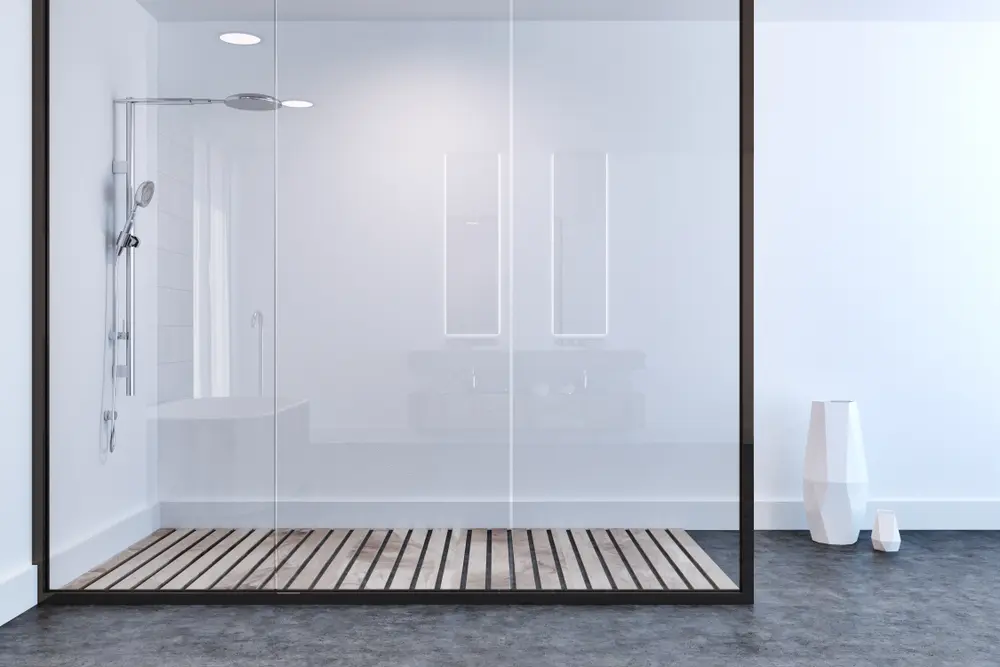
ImageFlow/Shutterstock
Not only can a shower pan serve as a function to eliminate water damage, but you can also use it to make a design statement.
Most shower pans come with unique materials like steel, various colors, and various textures. Not to mention, shower pans are quick to install and easy to clean.
Premade and custom shower pans come in various base materials, but certain shower pan materials reign superior to others. When choosing a suitable shower base, consider:
- Raised, recessed, or ready-to-tile installations
- Available vertical or horizontal drains
- Shower base shapes: square, rectangular, corner, round, and oval.
- Composite, ceramic, or plastic shower bases
Premade Shower Pan
Premade shower pans are economical in design with fiberglass and acrylic. Fiberglass pans prove durable despite noticeable wear and tear that can turn yellow over time.
However, it is sensitive to extreme heat that requires militant maintenance to avoid breeding bacteria and damaging the polyester woven glass fiber blend. Acrylic shower pans are lightweight, durable, and easy to maintain in over 200 colors.
It’s classy enough to look like glass, but it is a plastic material with a long life span that will not rust over time. That means that it is water-resistant and low maintenance.
- Pros: Prefabricated shower pans come in various shapes, colors, and textures that are easy to install. Fiberglass and Acrylic shower pans are available at home improvement centers.
- Cons: Premade shower stalls are available in in-stock sizes and cannot be customized. In addition, they can deteriorate with abrasive cleaners and deep scrubbing.
- Best For: Homes with structural damage underneath the shower, such as sagging, sloping, crumbling, and cracking. They are also the best choice for DIYs on a budget.
Stone Shower Pan
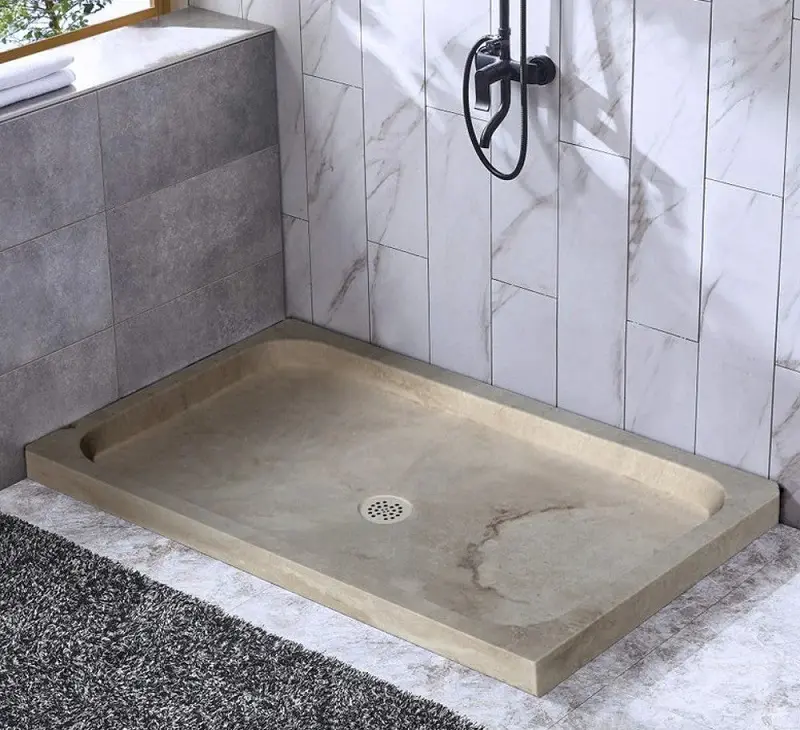
Image/Pinterest.com
Stone and resin shower pans tolerate wear and tear with a high-end modern look. Stone shower pans like granite, marble, and quartz or long-lasting, durable shower floors add an earthy look to any bathroom.
In addition, they are crack and scratch-resistant enough to tolerate heavy body weight.
Stone resin shower pans blend resin and crushed stone with a gel coating that is easy to install. Suitable quality stone resin is effortless to maintain and resistant to mold, mildew, and damage.
- Pros: Solid stone and mineral resin shower pans are slip-resistant, easy to clean, and waterproof. They are cost-effective, long-lasting, and naturally scratch resistant. In addition, they are antibacterial and non-slip.
- Cons: Pebble stone-style shower pans do not drain water well. Instead, water sits between the pebbles that can grow mold and mildew. However, flat pebble styles can reduce mold and mildew growth.
- Best For: Planet-friendly bathroom renovations. Stone shower pans are natural biodegradable materials. When they go to the landfill, they break down despite being heavy and expensive.
And stone pairs well with durable scratch and chip-resistant metal shower base variations such as cast iron, steel, and copper.
Mud Shower Pan
Before you lay down tile, acrylic or Fiberglass shower pans work well under showers with a tile floor.
And if you’re looking for the perfect concrete mix for your DIY shower pan that eliminates standing water and leaks, choose Floor Mud or Sand/Topping mix.
Together they make a durable, water-resistant shower floor that can support heavy stone tile. And even more, concrete shower pans for tile flooring pair well with indoor and outdoor use.
- Pros: Mud shower pans, also known as mortar beds, are a heavy, durable material and easy to install.
- Cons: Mud shower pans require an extra step like a mortar overlay to ensure a waterproofing membrane that will seal away water. However, mortar can crack the waterproof membrane causing leaks to go unnoticed and damage your home.
- Best For: Ceramic, porcelain, tile, and stone bathroom remodels.
Shower Pan Thresholds
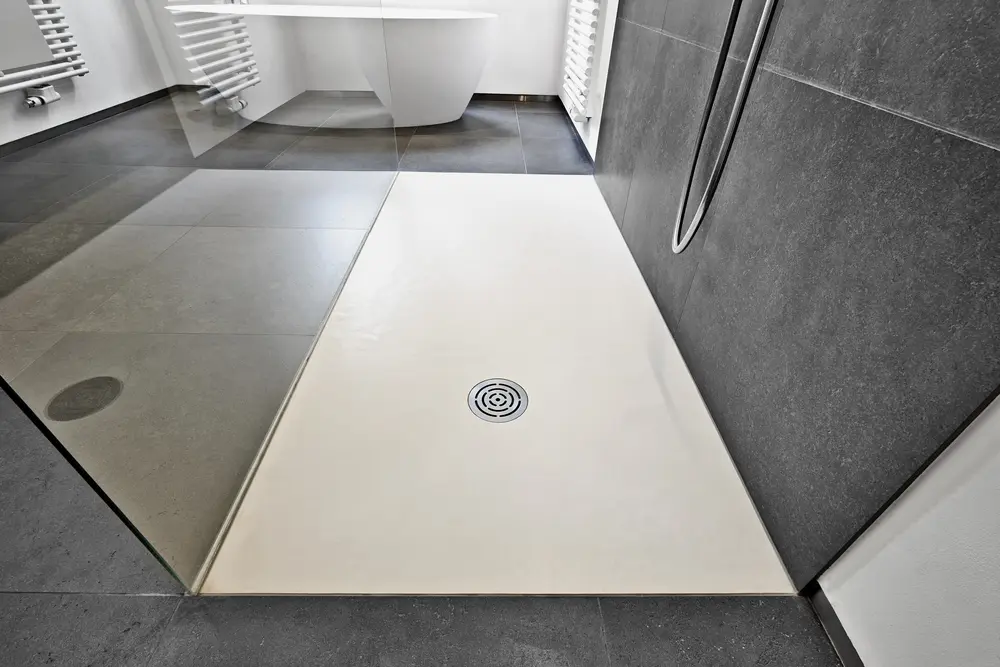
CapturePB/Shutterstock
Aside from the shower pan size and type, the shower-pan threshold is essential when your bathroom renovations must adhere to design codes.
A shower pan threshold is the front edge of the shower that you step over to get into the shower.
Common threshold types include:
- Curbed: The traditional shower that you find in residential homes
- Traditional: Also known as a bull nose threshold can be a barrier-free option
- Beveled: Most suitable for people with mobility restrictions
Curbed Thresholds
Curbed thresholds are also curbless, barrier-free, walk-in, and zero-threshold showers. That means there is no separation between the bathroom and shower floors.
Curbed thresholds help small showers feel more significant and reduce trip accidents with an elegant aesthetic. In addition, curbless threshold designs offer the option for heated floors.
Traditional Thresholds
Traditional thresholds, also known as bull nose thresholds, use trim with a smooth finished edge underneath tile layouts. They help reduce sharp edges.
Bull nose thresholds are a barrier-free alternative to curbed thresholds. Barrier-free thresholds are ADA and ANSI B-compliant that practically anyone can have easy access to them.
Beveled Thresholds
Beveled thresholds have an aesthetic edge over curbed and traditional thresholds. And they provided easy access to the shower while minimizing trip hazards and injury to children and elderly persons.
Frequently Asked Questions
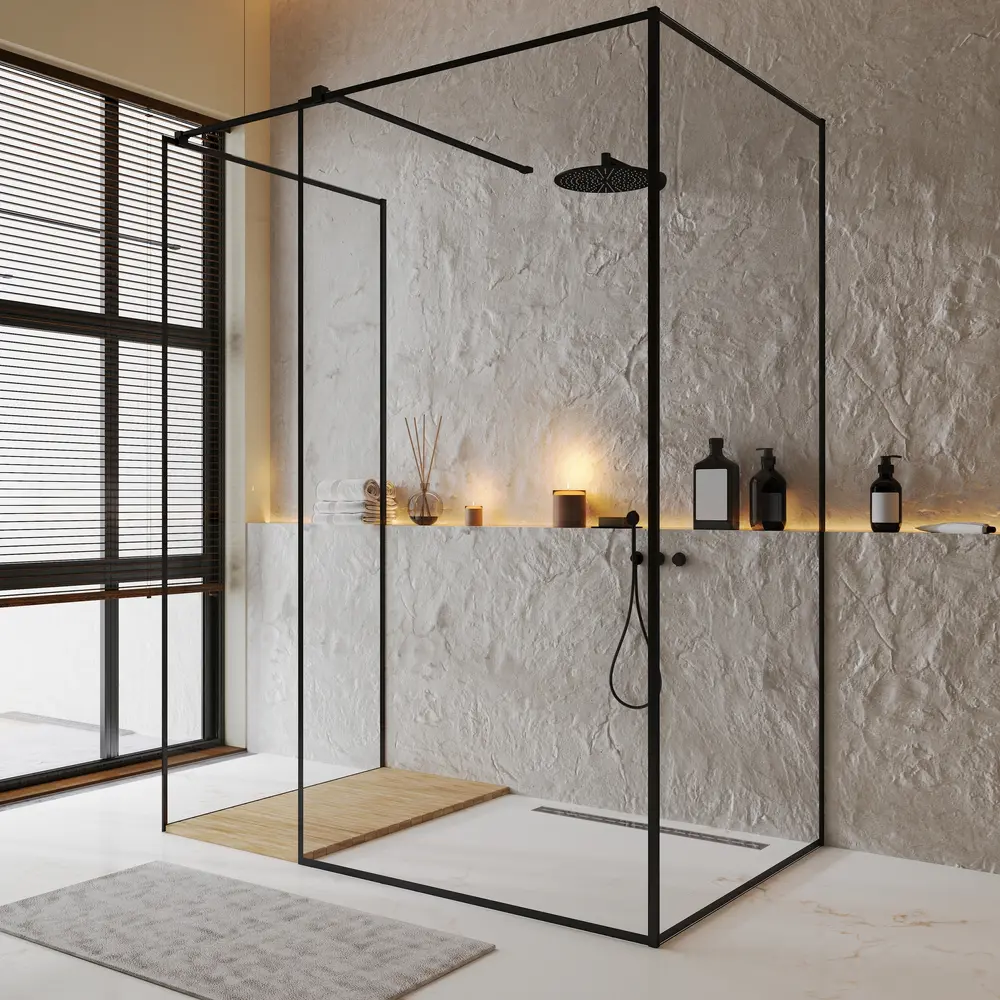
Shcherban Oleksandr/Shutterstock
Here are some frequently asked questions about shower pans.
Does a shower need a shower pan?
Showers need a shower pan to protect the floor and subfloor from water damage resulting in a leaking shower or poor draining. In addition, a shower pan provides a waterproof membrane for the shower base.
If you build a shower without a shower pan, you risk damaging your floor and your health. Common mold allergies and mildews grow in pools of water in areas of showers without shower pans.
Mold and mildew can trigger allergic reactions like fever-type symptoms and skin rash.
What is the difference between a shower tray and a shower pan?
A shower pan is the shower floor. The shower base is the structure underneath the shower floor. Both direct and retain water into the drain.
Do shower pans come in custom sizes?
Shower pans and shower bases can be custom cut into any shape and size with left, right, or center drains. All shower pans are not the same size.
Do I need both a shower pan and shower base?
Yes, it would be best to have a shower pan and base. The shower pan is the floor that you step on, and the shower base is the structure underneath the shower pan. Both have waterproof materials interwoven into fiberglass, acrylic, ceramic, stone, and metal.
How much does a shower pan cost?
The cost of a shower pan varies depending on installation, pan size, and type. Prices can range from $225 to $3,500.
So, What Are the Standard Shower Pan Sizes?
Shower pans can serve as a shower floor or provide a base underneath tile flooring paired with a shower base that sits on the underside of the shower floor.
Both work together to drain the shower and waterproof it from water damage.

